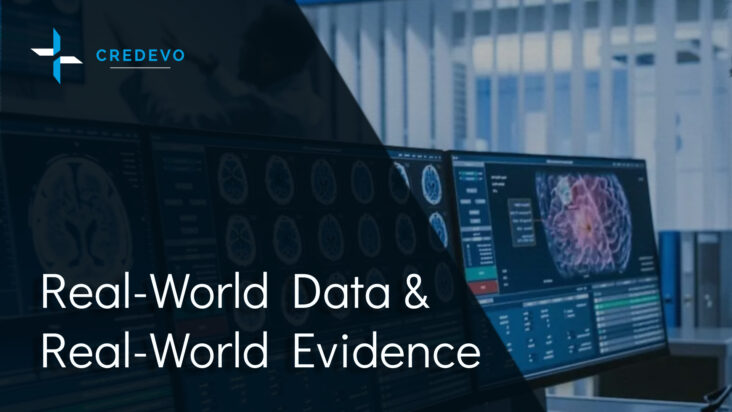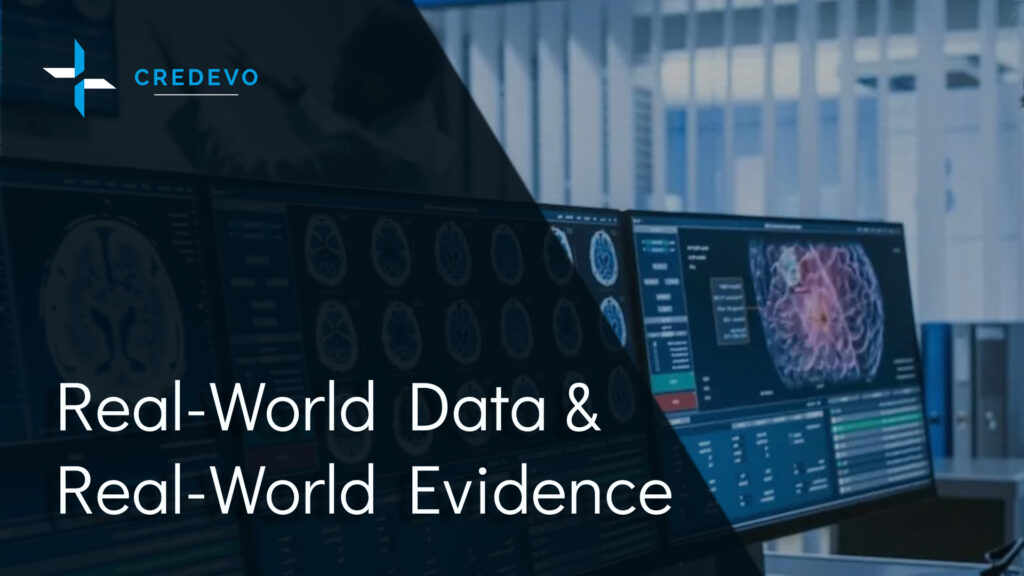Real World Data & Real World Evidence In Clinical Trials

The clinical research landscape is shifting drastically due to an increase in the availability of electronic data allowing researchers to make assessments based on available real-world evidence (RWE) obtained from the analysis of real-world data (RWD).

Global regulators are encouraging researchers/drug developers utilize the RWE for submissions. Many regulators are accepting the Real-world evidence (RWE) for post-approval safety surveillance studies. However, integration of Real-world data in early development for effectiveness during other phases of the drug life cycle is recently gaining traction around the globe.
Typically the RWE refers to observational data in contrast to data gathered in an experimental setting such as a randomized controlled trial (RCT).
What is Real-world data (RWD) and where does it come from?
Real-world data (RWD) in clinical research is the data obtained from various sources associated with outcomes in a heterogeneous patient population in real-world settings.
Sources for data include
- Health care databases like Electronic Health Records (EHRs)
- Patient registries
- Claims and billing activities
- Insurance claims
- Patient surveys
- Disease registries
- Social media
- Patient-generated data, including in home-use settings
- Data gathered from other sources that can inform on health status, such as mobile devices
Researchers can evaluate therapies in a broader population and at a much lower cost using data from these sources, under real-world conditions, compared with typical Randomized Control Trials (RCT).
What is Real-World Evidence (RWE)?
Real-world evidence is the clinical evidence regarding the use, potential benefits, or risks of a medical product or device extracted from the analysis of Real-World Evidence (RWE).
RWE can be generated by different study designs or analyses, such as
- randomized trials,
- large simple trials,
- pragmatic trials, and
- observational studies (prospective and/or retrospective).
How Real-world data (RWD) and Real-world evidence (RWE) are playing a crucial role in health care decisions?
- The health care communities are using these data to support coverage decisions and develop guidelines and decision support tools for use in clinical trials.
- Researchers use RWD and RWE to support clinical trial designs and observational studies to make intelligent, strategic decisions and create new treatment approaches.
- Regulatory like FDA, EMA, etc use Real-world data (RWD) and Real-world evidence (RWE) to monitor postmarked safety and adverse events and to make regulatory decisions.
Why RWD and RWE are gaining importance in new-age research?
- The use of computers, mobile devices, wearables, and biosensors to gather and store huge amounts of health-related data has been increasing rapidly.
- Researchers are using these data to better design and conduct clinical trials in the health care setting to answer infeasible questions.
- These data are cost-effective, efficient, trackable, and easily storable.
- With the development of sophisticated, new analytical capabilities, researchers and regulators analyse these data and apply the results of analyses to medical product development and approval.
Along with data integration and insights gained from existing data, or as a by-product of clinical care, RWE can improve clinical trial efficiency by
- support regulatory filings,
- stream clinical trial recruitment,
- expand patient access,
- drug safety surveillance.
- protocol feasibility assessment,
- site/physician identification,
- patient identification, and
- historical controls.
How does real-world data benefit drug developers?
Historically, drug developers use prospective randomized clinical trials as their primary route to extract data and achieve product approval. But things are changing with technological advances and regulatory expansions, which have broadened the possibilities available to clinical researchers by enabling the use of real-world data and the evidence from their analysis. RWE provides a cost-effective process and readily available data.
Patient recruitment & RWE
Patient enrolment is a common obstacle in clinical trials, and it consumes about 40% of the clinical trial budget. Sponsors struggle to identify the best clinical investigators, sites and enrol the study subject completely.
RWD can improve patient enrolment in three ways
- Researchers can use RWD to estimate the size of the available patient population for recruitment, given the inclusion/exclusion criteria.
- Electronic Health Record (EHR) systems help determine eligible patients and allows sponsors to focus on sites that serve a population to align with the protocol criteria.
- Creating software that alerts physicians about suitable patients, thus giving providers the opportunity to consent and enrol prospective participants into the trial.
Real World Data/Evidence & Regulatory
The goal of any drug developer is to obtain quality data, make submissions and obtain regulatory approval. The FDA, EMA, and other regulatory bodies are considering the totality of evidence when evaluating the safety and efficacy of new therapies. However, the conditions for RWE acceptability and applicability of the regulations differ across globe.
The U.S. FDA
The U.S. Food and Drug Administration (FDA) is developing regulatory frameworks (and issues guidance) for real-world evidence use to help support drug developers to approve new indications for previously approved therapies and to help satisfy post-marketing study requirements.
The FDA also recognizes the use of
- Electronic Health Records (EHR),
- mobile health technology, and
- other electronic data-capture technology, together
With new trial designs using RWD, there is increase in the potential to streamline and efficiency of clinical studies.
In several cases, the US Food & Drug Administration (FDA) has considered and accepted RWE instead of data from a traditional RCT in therapeutic areas such as oncology and immunotherapy and categories such as medical devices and diagnostic devices.
FDA has released MyStudies app an open-Source, Digital Platform to gather real world fata for Clinical Trials. On May 29, 2020, the U.S. Food and Drug Administration replaced the COVID MyStudies app with the FDA MyStudies app in the Apple App and Google Play Stores.
The European EMA
Real-world data (RWD) and real-world evidence (RWE) are already in use in the regulation of the development, authorization, and supervision of medicines in the European Union. EMA initiated the coordination centre for the Data Analysis and Real World Interrogation Network (DARWIN EU®). The role of this coordination centre is to develop and manage a network of real-world healthcare data sources across the EU and to conduct scientific studies requested by medicines regulators and other stakeholders.
Australian TGA
In assessing medicines and medical devices for safety, quality, and efficacy (medicines) or whether they meet their intended purpose (medical devices) the Therapeutic Goods Administration (TGA) accepts RWE and PROs, but however requires rigorous sources of evidence.
TGA sees that the evidence is free from bias, but however, well-designed clinical trials will remain the main means of evidence generation. It is recommended to discuss with the TGA officials in the pre-submission meetings about RWE and PROs’ inclusion in the dossier.
Japan-PMDA
The ministerial ordinance was amended to create a new category for a database study. The Pharmaceuticals and Medical Devices Agency (PMDA) offers consultation on developing plans that incorporate appropriate registry data and methods to ensure data reliability for drug applications,
The PMDA released two guidelines in March 2021: one guidance is on the basic principles of the use of registries in approval applications and the other on the points to consider for ensuring reliability when registry data.
Other regulators
In Asia, the National Medical Products Administration (NMPA) in China and the Taiwan Food and Drugs Administration (TFDA) have published RWE guidance documents in 2020
Study designs, Real-world data (RWD) & Real-world evidence (RWE)
Researchers often design clinical trials devoid of RWE and have impacts during regulatory approvals. It may be due to a lack of efficient data. Using RWE would provide additional evidence and help obtain regulatory approval. Planning the most appropriate and cost-effective RWE-based clinical trial designs is more complex and challenging. It is due to the data sources, methodologies, outcome measures, etc.
An initial understanding of regulatory guidelines and considerations for integrating RWE in clinical trial submission is critical. The early feedback from the stakeholders would avoid bias before initiating any clinical trial. It is advisable to have a clear meeting with the regulators and take outputs to design an efficient study.
Real-world evidence (RWE) efficiency in clinical trials
In contrast to a typical clinical trial where subjects are recruited and screened to identify the inclusion and exclusion criteria, RWD studies have the potential to leverage EHRs (Electronic Health Records) to identify potential subjects. Using this type of study design, data regarding the subject’s response to the investigational treatment would be recorded in the EHR. Such a design would significantly help streamline the clinical trial recruitment and participation process, leading to increases in efficiency and cost savings.
Clinical trials in some therapeutic areas where obtaining data would be difficult, researchers can utilize additional RWE as evidence to prove clinical safety and obtain drug approval.
Monitoring devices, Real-world data (RWD) & Real-world evidence (RWE)
Real-world data (RWD) and real-world evidence (RWE) are becoming important tools for medical device manufacturers for accelerating clinical development, The RWE is helping to understand how products perform once they reach the market and for delivering interventions efficiently to patients who need them.
In-turn, one of the most exhilarating aspects of RWD studies involves the increasing use of biometric monitoring devices in the form of smartphones, watches, and wearable technologies. These device help collect objective biological data such as body temperature, blood pressure, heart rate, ECG, mobility, and sleep patterns to revolutionize clinical trials.
Usually, these parameters are recorded in a controlled environment at discrete time points in RCT trials. But using biometric monitoring devices would allow for the collection of these parameters continuously and remotely, making the data much more efficient.
Real-world data sources
There are several sources for RWD accepted by most of the regulators for review. These are listed in the tabular column below.
| # | Source | Description |
| 1 | Patient registries | A patient registry is an organized system that uses observational study methods to collect uniform data to evaluate specified outcomes for a population defined by a particular disease, condition, or exposure, and that serves one or more predetermined scientific, clinical, or policy purposes. Examples: Alzheimer’s Prevention Registry, Cancer Genetics Network, Fibromuscular Dysplasia (FMD) Registry, etc. |
| 2 | Electronic health records (EHRs) | EHRs are electronic platforms that contain health-related data collected during medical care in practices, clinics and other medical settings from various sources, connected to form a network of patient clinical data. |
| 3 | Patient-reported outcomes (PROs) | Report of the status of a patient’s health condition that comes directly from the patient, without interpretation of the patient’s response by a clinician or anyone else. |
| 4 | Patient-generated health data (PGHD) | Patient-generated health data (PGHD) are health-related data created, recorded, or gathered by or from patients (or family members or other caregivers) to help address a health concern. |
| 5 | Medical product/device registries | A medical device registry is focused on tracking the effectiveness, safety, and value of medical devices. |
| 6 | Condition-specific or disease registries | The primary purpose of a condition / disease registry is to collect diagnostic details on patients with specific diseases or conditions. |
| 7 | Administrative claims | Administrative claims are insurance claims related to services from healthcare providers. |
Technologies such as artificial intelligence, machine learning and natural language processing, can increase RWE output, decrease time to actionable insights, and take advantage of the vast data sources available.
In conclusion, real world data are bringing impeccable changes in the clinical trial sector, making clinical trials cost effective, quicker and efficient. Regulators are also creating routes in integrating the routine RCT trials designs with RWE to improve outcomes and make efficient review for drug approvals.
Are you looking for effective clinical data management & biostatistic solutions for your clinical trial?
Talk to us today. Provide preliminary details below, and we will help you achieve your clinical data management objectives for clinical trials.